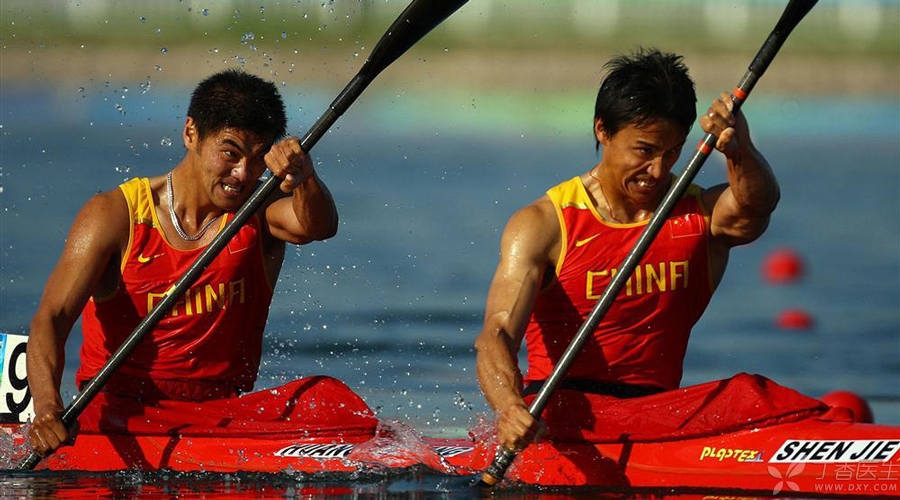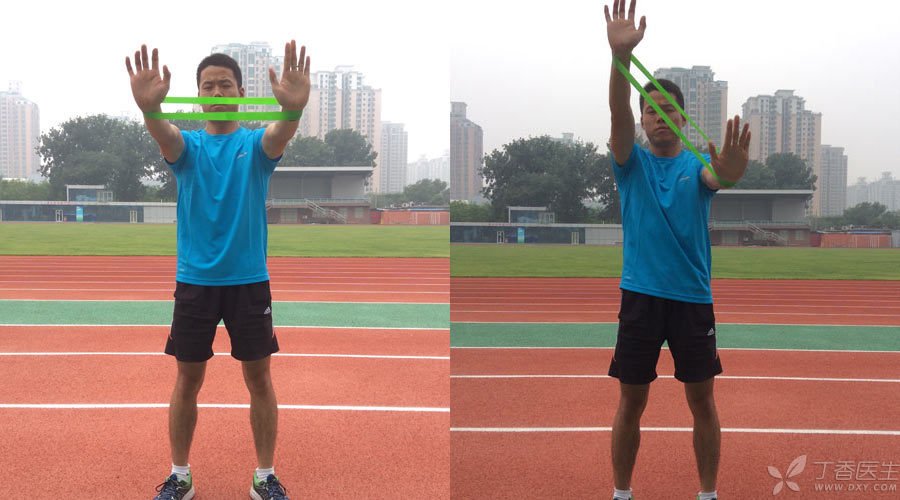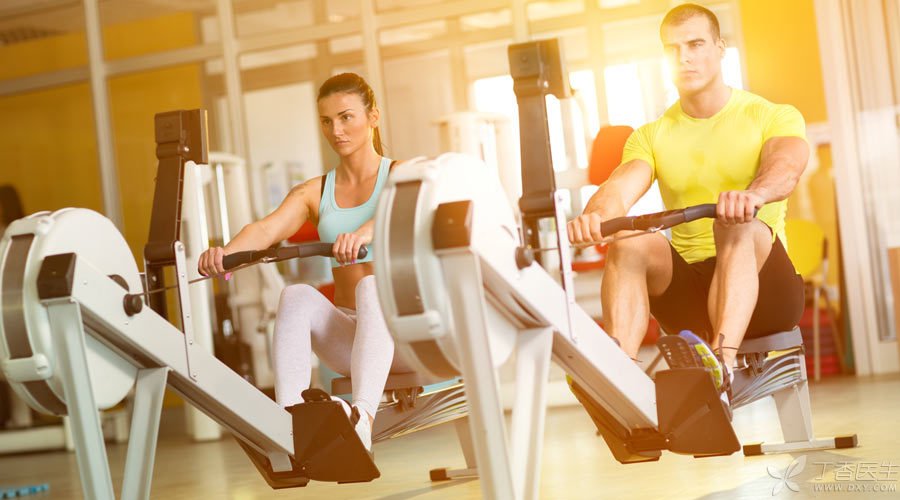
Dragon Boat Festival, dragon boat water is fierce. On this day in many places, traditional dragon boat races are staged in turn with loud gongs and drums.
However, dragon boat is not just a simple traditional recreational activity. Canoeing is not only an official Olympic event, but also a recognized leisure and fitness event in European and American countries. Therefore, if you are tired of running, swimming and cycling, you can try and experience this new type of efficient aerobic exercise.
Mastering canoeing skills and carrying out targeted physical training can enable you to achieve good results in the competition.
Key Points of Canoeing
STEP 1 Control the stability of your body
As a water event, canoeing is carried out in an unstable state. How to control the stability of the body is the key to master this sport.
2. Ensure good cardiopulmonary function
Canoeing belongs to aerobic exercise. In addition to strengthening physical stability training and basic strength training, it is also necessary to strengthen the development of aerobic capacity to ensure good cardiopulmonary function.
Therefore, for canoeing beginners, it is necessary to simulate the unstable state on water and strengthen the body’s control ability through some physical training methods on land, such as Swiss ball, foam cushion and lunge posture. In addition, rowing machines are used to strengthen the heart and lung function, and intermittent training is the main training method.
A complete set of physical training can be carried out according to the following steps.
Step 1: Warm up
1. Shoulder activation
Objective: To activate shoulder joints and muscles to prepare for training.
Essentials: The preparation posture is standing, sinking the scapula, shrinking the scapula at the same time, placing the mini belt at the wrist, maintaining a certain tension, then one arm does not move, the other arm draws a circle, and then practices alternately. Generally, one arm is done 5 times in a group.

2. Active Thoracic Spine Rotation Exercise
Objective: To open the thorax as much as possible and improve the mobility of thoracic vertebra.
Essentials: Sit on your heel, bend your arms on one side and place them in the midline of the front side of your body, while gently place your hands behind your head or back and rotate with your midback. When rotating to the maximum position, stop and hold, and rotate to the maximum position as much as possible. However, it is necessary to ensure that not the shoulder is rotating but the entire thoracic vertebra segment, and repeat this action alternately. Generally, one side does it 5 times as a group.
Step 3 Bow Stretch
Objective: Stretch our latissimus dorsi muscle, posterior thigh muscle group and hip muscle.
Main points of action: The preparation posture is to prop up first, then to lunge, touch the ground with the elbows on the same side, and straighten the hind legs; Generally, one leg is done 6 times in a group.
Step 4 Climb on your hands and feet
Objective: Stretch our posterior femoral muscle group, lumbar back muscle group and activate shoulder joint at the same time.
Main Points of Action: The preparation posture is to straighten the legs and bend forward while touching the bottom with both hands. If flexibility is not very good, you can do it from the second figure, then keep the legs straight and climb forward with both hands until you are in the leaning posture. Then keep the knee joint straight and climb back with both hands until you return to the ready position. Generally, five steps are taken in groups.
Step 2: Core Stability Exercise
1. Swiss Ball Kneeling Training
The purpose of the movement is to train the core control ability and the coordination and balance ability of the body.
Main points of action: Keep your kneeling posture on the Swiss ball while tightening your abdomen and buttocks to control the stability of the Swiss ball through the core. Generally, 30 seconds is a group and 3 groups are carried out.
2. Russian twist
Objective: To train abdominal strength and core control.
Main points of action: First lie on your back, lift your legs at 30 degrees with the ground, bend your knees, leave your upper body off the ground, hold the kettle bell or dumbbell in both hands, and put it on your chest. Then keep your body posture and rotate the kettle bell left and right. Generally, 15 times are in groups and 3 groups are carried out.
Choose the weight according to your own condition. Generally, it is not too heavy for beginners. 15 pounds is more appropriate, and then gradually increase the weight.
If you don’t practice in the gym, you can find a 1.5-litre bottle of mineral water for auxiliary practice.
Step 3: Special Strength Exercise
1. Kneel and pull down obliquely
Objective: To increase the strength of upper limbs and abdominal external oblique muscles
Main points of action: body lateral trainer (trainer is a constant resistance training instrument with constant resistance; If you don’t have these instruments around you, we can replace them with elastic belts). Prepare to kneel and straighten your upper body. Hold the handle of the inner instrument with both hands and twist your body inward.
At the beginning of the exercise, the hip joint remains stable, the trunk part above the waist rotates fully outward, and the hands quickly pull down the instrument handle obliquely downward along the trend of body rotation.
During the exercise, hold out your chest and raise your head, tighten your back, and keep your hip joint stable. After returning to the initial posture, repeat the last action. Generally, 8-12 times are in groups, and 4-6 groups are carried out.
2. The Swiss ball is pulled up obliquely in its sitting position.
Objective: To increase the strength of upper limbs and abdominal external oblique muscles
Essentials of action: First, sit on the Swiss ball with the big calf at 90 degrees, the body lateral trainer or the place where one side of the elastic belt is fixed, the feet are opened left and right as wide as the shoulder, the shoulder joint is relaxed and sunk, the instrument handle is held on the inner shoulder with both hands, and the body is twisted to the inner side.
At the beginning of the exercise, both hands will quickly pull down the instrument handle obliquely downward along the trend of body rotation, and the body posture will remain stable during the exercise. After returning to the initial posture, repeat the previous action. Generally, 5 ~ 10 times are in groups, and 3 ~ 5 groups are carried out.
Step 4: Aerobic Capacity Training

Rowing machine training
Objective: To improve aerobic endurance and cardiopulmonary function.
Training essentials and load arrangement: Prepare to sit on the rowing machine in a posture, then exert force on the legs, exert force on the arms, and push and pull backward. During the exercise, attention should be paid to maintaining the stability of the trunk and coordinating the exertion of force on the upper and lower limbs.
In general, we use the maximum resistance for 30 seconds of training, and then change 70% of the maximum resistance for 30 seconds of recovery rowing training, which is a group. There is no interval in the middle. Change the maximum resistance to practice for 30 seconds and repeat the above actions once, with a total of 5 groups.
Step 5: Restore Relaxation with Foam Shaft
1. Combing the lateral muscles of the body
Purpose: Relax the lateral muscles of the body
Main points of action: The preparation posture is to lie on your side, place the foam shaft on the side of your body, and press the body’s center of gravity on the foam shaft to roll back and forth. Generally, roll back and forth 10 times.
Step 2 Comb the back muscles
Purpose: Relax back muscles
Main points of action: The preparation posture is to lie on your back, place the foam shaft under your shoulder, and at the same time press the body’s center of gravity on the foam shaft to roll back and forth, or roll your body sideways to roll back and forth. Generally, roll back and forth 10 ~ 15 times.
3. Combing the waist muscles
Objective: Relax back muscles and loosen spine.
Main points of action: The preparation posture is to lie on your back, bend your knees, place the foam shaft under your waist, and roll back and forth, usually 10-12 times.
Step 6: static stretch
1. Deltoid stretch
Objective: To stretch deltoid muscle
Main points of action: Relax, place one side on the shoulder of the other side, then hold the elbow with the other hand and push it backward. Pay attention to the light to heavy force in the stretching process. At the same time, it is matched with breathing. Generally, stretching is carried out in units of breathing, with 6-18 breaths.
2. Extension of middle and lower bundle of trapezius muscle
Purpose: Stretch the muscles above the back
Objective: The preparation posture is to bend the elbow of one arm in front of the body, and the other hand assists the elbow position to exert force on one side of the body, rotate the body at the same time, pay attention to the breathing rhythm, inhale when preparing the posture, exhale during stretching, and breathe for 6-18 times.
Step 3 Stretch the shoulders
Objective: Stretch shoulder muscles
Main points of action: One arm is lifted up with the palm facing back, and the other arm is pulling the elbow of the raised arm to one side of the body. The body can tilt to the stretching side. At the same time, pay attention to the breathing rhythm, 6 ~ 8 breaths.
4. Latissimus dorsi stretching
Objective: Stretch latissimus dorsi muscle
Main points of action: one arm is lifted up obliquely, the other hand holds the elbow of the raised arm, and exerts force upward. At the same time, pay attention to the breathing rhythm, 6 ~ 8 breaths.
